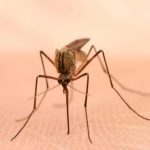
Yellow fever may be resurfacing in the United States, thanks to climate change. The mosquito-borne viral illness decimated southern U.S. cities from 1820 to 1905, and now a new report says it could return to those areas. One of the potential reasons for a yellow fever resurgence? Global warming, because mosquitoes love warm, wet weather. Exactly where yellow fever may turn up in the United States is not known, but historically outbreaks occur in the southern U.S. along ports such as New Orleans, Galveston, Texas, and along the Mississippi River, said study author Dr. Peter Hotez. He is the dean of the National School of Tropical Medicine at Baylor College of Medicine and co-director of the Texas Children’s Hospital Center for Vaccine Development in Houston. Symptoms of yellow fever range from a fever with aches and pains to severe liver disease with bleeding and yellowing skin (jaundice). There is no treatment or cure for yellow fever, but there is a vaccine available. “There has been an increase in small outbreaks of mosquito-transmitted infections such as malaria, dengue, chikungunya and Zika virus in the southern U.S., especially Florida and Texas,” Hotez explained. “Yellow fever has expanded from the Amazon region into a more populated area of Brazil, so there are concerns that it could also re-emerge here.” It’s time to expand mosquito-transmitted virus surveillance, especially in… read on > read on >


















